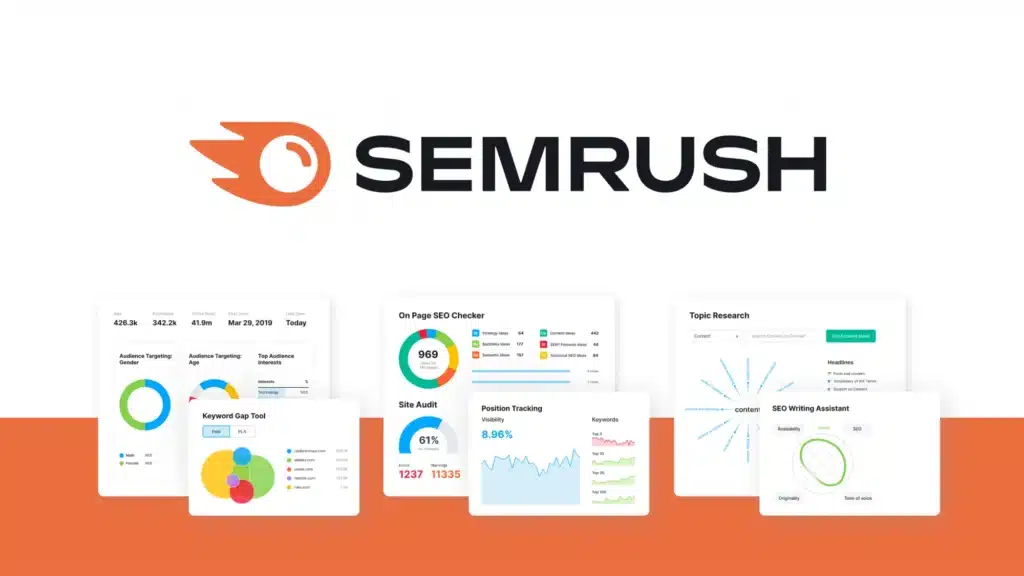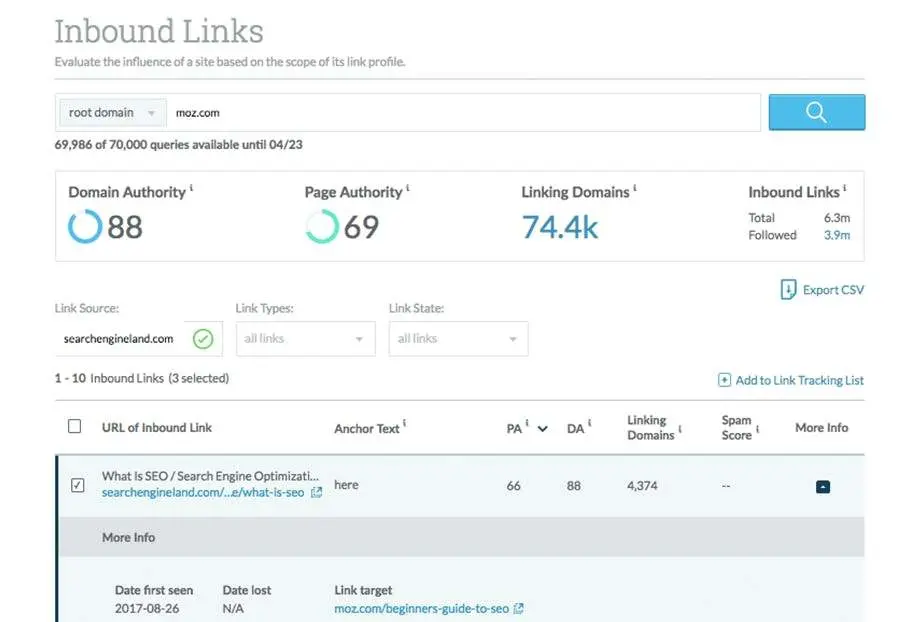How to Track and Measure Off-Page SEO Efforts
Off-page SEO plays a critical role in the success of your overall search engine optimization strategy. While on-page SEO deals with optimizing the content and structure of your website, off-page SEO focuses on building your website’s authority and trustworthiness through external factors like backlinks, social media engagement, and brand mentions.
As a small business in Sacramento, understanding how to track and measure these off-page SEO efforts is essential to refining your strategy and achieving better rankings on search engines like Google. In this guide on how to track and measure Off-Page SEO, we’ll dive into the most important metrics to monitor, the tools you need to track your progress, and how to use Google Analytics to measure the success of your off-page SEO efforts. Let’s get started!

Key Metrics for Monitoring Off-Page SEO Performance
When it comes to off-page SEO, simply building backlinks and hoping for the best isn’t enough. To truly understand the impact of your efforts, you need to keep a close eye on specific metrics that indicate whether your strategies are working. Here are the key metrics you should monitor:
- 1. Backlink Quantity and Quality: The number of backlinks pointing to your website is a significant indicator of your site’s authority. However, not all backlinks are created equal. High-quality backlinks from authoritative and relevant websites carry much more weight than a large number of low-quality links. It’s important to focus on both the quantity and quality of your backlinks.
- 2. Domain Authority (DA) and Page Authority (PA): Domain Authority (DA) and Page Authority (PA) are metrics developed by Moz to predict how well a website or specific page will rank in search engine results. DA is a measure of the overall strength of your domain, while PA focuses on individual pages. These scores are influenced by the number and quality of backlinks, making them critical metrics for off-page SEO.
- 3. Referring Domains: Referring domains are the number of unique domains that link to your website. Having a diverse set of referring domains indicates that your content is gaining recognition from various sources, which is a strong signal to search engines. Focus on acquiring links from a broad range of reputable websites rather than relying on multiple links from the same domain.
- 4. Social Signals: Social signals refer to the engagement your content receives on social media platforms. Likes, shares, comments, and other interactions indicate that your content resonates with your audience, which can indirectly influence your SEO performance. While social signals are not a direct ranking factor, they can amplify your content’s reach and lead to more backlinks.
- 5. Brand Mentions: Brand mentions occur when other websites or social media users reference your brand without necessarily linking to your website. These mentions, whether linked or unlinked, contribute to your brand’s online presence and authority. Monitoring brand mentions helps you understand the impact of your off-page SEO efforts in terms of brand awareness.
Tools for Tracking Backlinks and Brand Mentions
To effectively track your off-page SEO performance, you’ll need the right tools. There are several platforms available that can help you monitor backlinks, brand mentions, and other off-page SEO metrics. Here’s a look at some of the most popular and effective tools:
1. Ahrefs
Ahrefs is a comprehensive SEO tool that allows you to track backlinks, referring domains, and more. With its robust database, you can easily see which sites are linking to you, the quality of those links, and how your backlink profile compares to competitors. Ahrefs also provides insights into your site’s Domain Authority and organic traffic, making it an essential tool for off-page SEO.

2. SEMrush
SEMrush is another powerful tool that offers a wide range of features for tracking your off-page SEO efforts. It provides detailed reports on backlinks, brand mentions, and referring domains. SEMrush also includes tools for keyword research, site audits, and competitor analysis, giving you a comprehensive view of your overall SEO performance.

3. Moz Link Explorer
Moz Link Explorer is specifically designed for tracking backlinks and analyzing link profiles. It allows you to see which websites are linking to you, evaluate the quality of those links, and identify opportunities for link-building. Moz also provides DA and PA scores, which are crucial metrics for measuring off-page SEO success.

4. Google Alerts
Google Alerts is a free tool that helps you monitor brand mentions across the web. By setting up alerts for your brand name, keywords, or specific topics, you can receive notifications whenever your brand is mentioned online. This allows you to track unlinked brand mentions and potentially turn them into valuable backlinks.

5. BuzzSumo
BuzzSumo is a content marketing tool that helps you track social signals and monitor brand mentions. It allows you to see how your content is performing on social media, who is sharing it, and what kind of engagement it’s receiving. BuzzSumo is particularly useful for identifying influencers and amplifying your content’s reach.

How to Use Google Analytics to Measure Off-Page SEO Success
Google Analytics is an indispensable tool for any business looking to measure the success of their SEO efforts. While it’s primarily known for tracking on-page activity, it can also provide valuable insights into your off-page SEO performance. Here’s how you can use Google Analytics to measure the impact of your off-page SEO efforts:

1. Monitor Referral Traffic
Referral traffic is the traffic that comes to your website from other websites. This is a direct result of your backlinking efforts. By monitoring referral traffic in Google Analytics, you can see which websites are driving the most traffic to your site, assess the quality of that traffic, and identify new link-building opportunities.
To track referral traffic, navigate to Acquisition > All Traffic > Referrals in your Google Analytics dashboard. Here, you’ll see a list of referring sites, the number of sessions they’ve generated, and key engagement metrics such as bounce rate, pages per session, and average session duration.
2. Analyze Social Traffic
Social traffic refers to visitors who come to your website from social media platforms. This metric helps you gauge the effectiveness of your social media marketing efforts and their impact on your overall SEO performance. Google Analytics allows you to track social traffic and see which platforms are driving the most engagement.
To monitor social traffic, go to Acquisition > Social > Overview in Google Analytics. This report provides a breakdown of traffic by social network, as well as insights into how that traffic is interacting with your site.
3. Track Conversions from Referral and Social Traffic
Ultimately, the success of your off-page SEO efforts should be measured by the impact they have on your business goals, such as leads, sales, or other conversions. Google Analytics allows you to track conversions from specific traffic sources, including referral and social traffic.
To set up conversion tracking, you’ll need to define your goals in Google Analytics. Once your goals are set, you can see which referral and social sources are contributing to conversions by navigating to Conversions > Goals > Overview and applying the appropriate filters.
Analyzing the Quality of Your Backlinks
Not all backlinks are created equal, and it’s crucial to analyze the quality of the links pointing to your website. High-quality backlinks can significantly boost your site’s authority and rankings, while low-quality or spammy links can do more harm than good. Here’s how to evaluate the quality of your backlinks:

- 1. Relevance: A high-quality backlink comes from a website that is relevant to your industry or niche. For example, if you run a local bakery in Sacramento, a backlink from a popular food blog or local news site would be considered highly relevant. On the other hand, a link from an unrelated website, such as a tech blog, would hold less value.
- 2. Authority of the Linking Domain: The authority of the site linking to you plays a significant role in the value of a backlink. A link from a highly authoritative site, like a major news outlet or an industry leader, carries more weight than a link from a lesser-known website. Use tools like Ahrefs or Moz to check the Domain Authority of the sites linking to you.
- 3. Anchor Text: The anchor text is the clickable text in a hyperlink. Ideally, the anchor text should be relevant to the content of the page it’s linking to and include your target keywords naturally. Avoid over-optimization, as using exact-match keywords excessively in anchor texts can be seen as manipulative by search engines.
- 4. Link Placement: Where a backlink is placed on a webpage also affects its quality. Links embedded within the main content of a page are generally more valuable than those placed in sidebars, footers, or author bio sections. Links within the content are more likely to be clicked and are seen as more editorially relevant.
- 5. Traffic and Engagement of the Linking Page: A backlink from a page that receives significant traffic and engagement is more valuable than one from a low-traffic page. If users are actively engaging with the content on the linking page, there’s a higher likelihood that they’ll click through to your website. This not only drives referral traffic but also signals to search engines that your content is valuable.
Tracking the Impact of Social Signals on SEO Rankings
Social signals, such as likes, shares, and comments, are an important aspect of off-page SEO, even though their direct impact on rankings is still debated. However, social signals can amplify your content’s reach and indirectly contribute to higher rankings. Here’s how to track the impact of social signals on your SEO performance:

1. Monitor Social Engagement Metrics: Tracking social engagement metrics, such as likes, shares, comments, and retweets, can give you a sense of how well your content is resonating with your audience. High engagement on social media often leads to increased visibility and more opportunities for your content to earn backlinks.
Use tools like BuzzSumo or the built-in analytics features of social media platforms to monitor engagement metrics. Pay attention to which types of content perform best and adjust your social media strategy accordingly.
2. Analyze Traffic from Social Media: Google Analytics allows you to track the amount of traffic your website receives from social media platforms. By analyzing this data, you can determine which platforms are driving the most traffic and whether that traffic is converting into leads or sales.
Navigate to Acquisition > Social > Network Referrals in Google Analytics to see a breakdown of traffic by social network. You can also compare this data over time to assess the effectiveness of your social media campaigns.
3. Assess the Correlation Between Social Signals and Rankings: While it’s challenging to establish a direct cause-and-effect relationship between social signals and rankings, you can look for correlations between the two. For example, if a piece of content that received high social engagement also saw an improvement in rankings, it’s likely that the social signals played a role.
To assess this correlation, track the performance of your content in search engine rankings over time using tools like Ahrefs or SEMrush. Compare this data with your social engagement metrics to identify any patterns.
4. Encourage Social Sharing: To maximize the impact of social signals on your SEO, encourage your audience to share your content on social media. Include social sharing buttons on your website, create shareable content like infographics or videos, and actively engage with your audience on social platforms.
Additionally, consider reaching out to influencers or industry leaders who can amplify your content to a larger audience. Influencer shares can lead to a significant boost in social signals and increase the chances of your content earning high-quality backlinks.
FAQs
Conclusion
Tracking and measuring your off-page SEO efforts is crucial to ensuring the success of your overall SEO strategy. By monitoring key metrics like backlink quality, domain authority, and social signals, you can gain valuable insights into how well your off-page strategies are working and make informed decisions to improve your online visibility. Utilize tools like Ahrefs, SEMrush, and Google Analytics to track your progress, and don’t forget to analyze the quality of your backlinks to ensure they are contributing positively to your SEO performance.
At Social Peak Media, we specialize in helping Sacramento small businesses enhance their online presence through effective off-page SEO strategies. If you’re looking to improve your search engine rankings and drive more traffic to your website, our team is here to help. Reach out to us today to learn more about how we can elevate your business to new heights.







